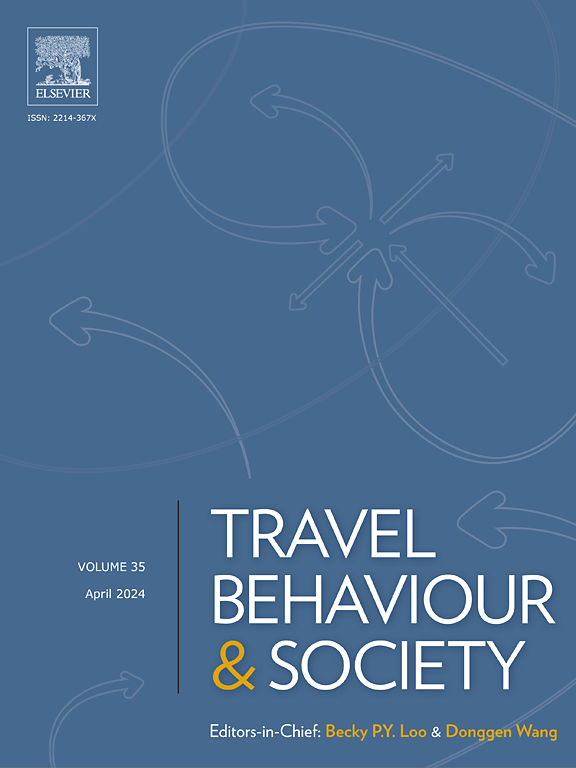To grab or not? Revealing determinants of drivers’ willingness to grab orders in on-demand ride services
IF 5.7
2区 工程技术
Q1 TRANSPORTATION
引用次数: 0
Abstract
Prior research on drivers’ order response behavior in on-demand ride services has predominantly concentrated on the dispatching mode, where passengers’ orders are directly assigned to specific drivers by the platform, while little attention has been paid to the broadcasting mode, where drivers have the freedom to select an order from a pool of passenger requests broadcast by the platform. Drivers’ willingness to grab orders (WTG) is crucial to the efficiency of the broadcasting system, as low willingness to grab orders can lead to prolonged passenger waiting times and reduced passenger satisfaction levels. In this research, we explore the factors influencing drivers’ WTG on an e-hailing taxi platform in Hong Kong that adopts the broadcasting mode. Users on this platform are taxi drivers who can also pick up street-hailing orders. These taxis are referred to as e-hailing taxis. Based on an operational dataset from this platform, we use a logit model to examine the effects of trip-level and zone-level attributes on drivers’ WTG. Our results reveal a nonlinear relationship between drivers’ WTG and delivery distance; WTG initially increases with delivery distance but decreases as delivery distance exceeds a threshold. This is found to be due to drivers’ unwillingness to grab excessively long-distance orders heading to remote suburban regions, considering the difficulties in securing subsequent orders. We also find that WTG is lower for orders with longer pickup distances or originating in areas with a denser road network but increases when population density rises from origin to destination. Moreover, we find that drivers become less willing to grab orders with long delivery distances when shift periods approach. Drawing on these results, we provide suggestions for improving the efficiency of e-hailing platforms and for policymakers to enhance transport equity in suburban areas.
抢还是不抢?揭示了司机在按需乘车服务中抢单意愿的决定因素
以往对网约车中司机订单响应行为的研究主要集中在调度模式上,即乘客的订单由平台直接分配给特定的司机,而对广播模式的研究较少,即司机可以从平台广播的乘客请求池中自由选择订单。司机抢单意愿(WTG)对广播系统的效率至关重要,因为低抢单意愿会导致乘客等待时间延长,降低乘客满意度。在本研究中,我们探讨了香港一个采用广播模式的网约车平台上司机WTG的影响因素。该平台的用户是出租车司机,他们也可以接叫车订单。这些出租车被称为网约车。基于该平台的运行数据集,我们使用logit模型来检查行程级和区域级属性对驾驶员WTG的影响。研究结果表明,驾驶员WTG与配送距离之间存在非线性关系;WTG最初随着输送距离的增加而增加,但随着输送距离超过阈值而减少。这是因为司机们考虑到后续订单的难处,不愿意接受前往偏远郊区的长途订单。我们还发现,对于取货距离较长的订单或来自道路网络较密集地区的订单,WTG较低,但当人口密度从起点到目的地上升时,WTG会增加。此外,我们发现,当换班期临近时,司机不太愿意接远距离的订单。根据这些结果,我们为提高网约车平台的效率和政策制定者提高郊区交通公平提供了建议。
本文章由计算机程序翻译,如有差异,请以英文原文为准。
求助全文
约1分钟内获得全文
求助全文
来源期刊

Travel Behaviour and Society
TRANSPORTATION-
CiteScore
9.80
自引率
7.70%
发文量
109
期刊介绍:
Travel Behaviour and Society is an interdisciplinary journal publishing high-quality original papers which report leading edge research in theories, methodologies and applications concerning transportation issues and challenges which involve the social and spatial dimensions. In particular, it provides a discussion forum for major research in travel behaviour, transportation infrastructure, transportation and environmental issues, mobility and social sustainability, transportation geographic information systems (TGIS), transportation and quality of life, transportation data collection and analysis, etc.
 求助内容:
求助内容: 应助结果提醒方式:
应助结果提醒方式:


